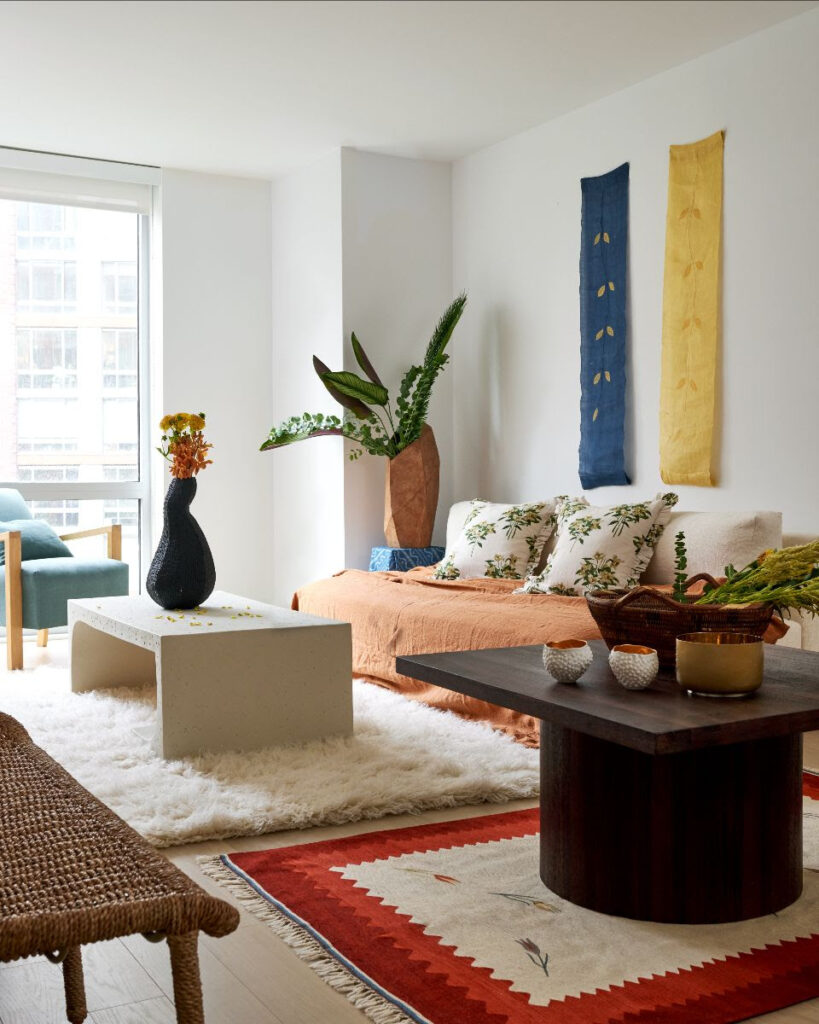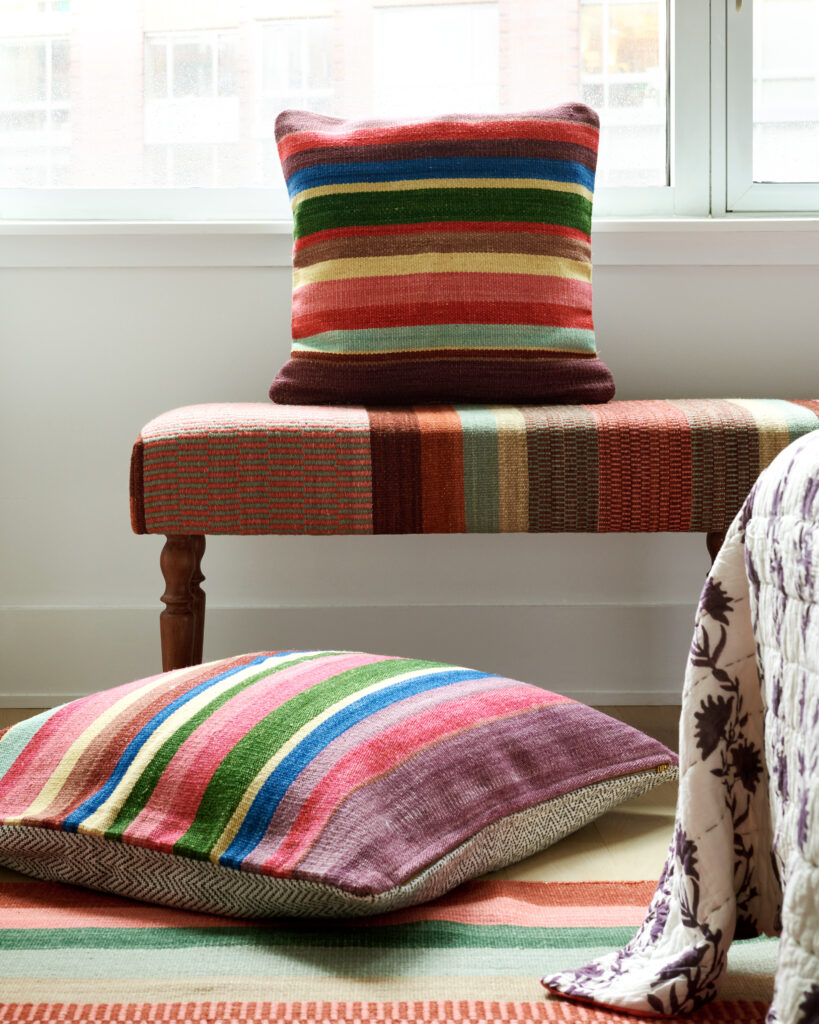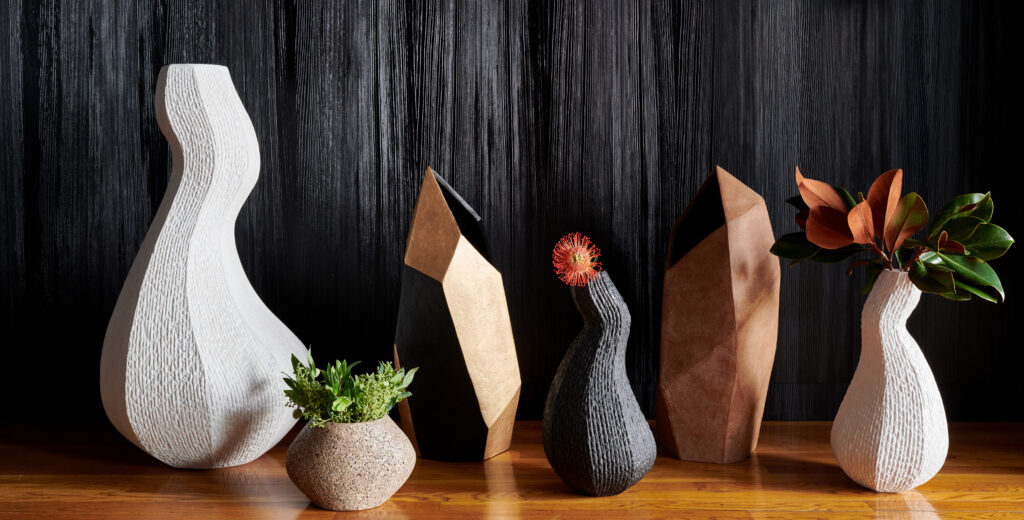As we look ahead to the new year, circularity advocate and sustainability expert Laurence Carr—of the eponymous regenerative design firm, Laurence Carr—shares three of the most meaningful sustainability-minded trends for 2024. Below, we’ve highlighted a recent project and a new product launch by Carr that perfectly exemplifies how incorporating some of these environmentally-friendly lifestyle elements—such as including third-party certification and/or upcycled products, heirloom-quality furniture, and sustainable design principles—can yield a gorgeous, character-filled home that is designed in harmony with nature, not at its expense.


Conscious Consumerism
In this NYC pied-à-terre located in a LEED platinum-certified building, Carr perfectly exemplifies conscious consumerism. The designer incorporated furniture and textiles from GreenRow—an ethical home furnishings company specializing in sustainably sourced materials—cradle-to-cradle, sculptural vessels from her Studio Laurence collection, and a CB2 FSC-certified sofa and credenza. Often defined as the opposite of mindless consumption, this thoughtful approach involves the practice of mindfully and intentionally buying and using products that reflect the lifestyle values of the consumer while mitigating one’s footprint. Purposeful consumption can involve understanding how a product was made, its provenance, and how environmentally friendly the product is at the end of its life cycle, as well as if it’s needed.

Carbon Zero and Low-Impact Materials
As environmental consciousness increases, there is a continued shift towards carbon-zero materials, and a prioritization of those with low environmental impact, which contribute both to the sustainability of built environments and the wellbeing of the residents within them. In this project vignette, Carr showcases just how aesthetically appealing upcycling textiles on heirloom-quality furniture can be—all while reducing her environmental footprint. Below are a few of the ways increasing this focus benefits our daily lives.
- Health + Certifications: Materials that prioritize our health contribute to indoor air quality because they do not emit harmful chemicals, promoting a healthier living environment for residents. To source these materials, look for third-party certifications (like FSC, OEKO-TEX, GOTS, Cradle2Cradle, and Greenguard) to verify their standards.
- Low Environmental Impact: Materials sourced or manufactured with a focus on minimizing (or eliminating) their environmental footprint are made with reduced energy consumption, fewer emissions during production, and a lower impact on natural resources, fostering a more sustainable lifestyle.
- Wellness and Peace of Mind: Sustainably-sourced materials benefit the environment outside but also contribute to the mental and physical wellbeing of occupants inside. There is great peace of mind in knowing that the materials used in one’s living space are eco-friendly and sustainably sourced, and their use and presence often contribute to a more mindful and conscious way of living

Circular Design Principles
An increased emphasis on circular design and products that are designed for longevity, repairability, and recyclability is on the rise, along with the prioritization of healthy materials and a growing interest in innovative biomaterials created from highly renewable natural resources and/or materials that would otherwise be considered waste. In her most recent project, Laurence included a couple of her newly launched cradle-to-cradle vessels—created in collaboration with Nature’s Legacy. The vessels employ closed-loop, zero-waste processes and production methods that mitigate environmental harm, while perfectly showcasing mindful luxury. By embracing circular design principles, we dramatically reduce the waste we generate in our manufacturing processes and the products we buy and use in our homes. Laurence outlines some key points to consider:
- Antiques and Chemical Emissions: Antiques and vintage items give off minimal chemical emissions due to their age, the materials used, and their production methods and finishes
- Waste Reduction: Circularity encourages responsible consumption, recycling, and disposal practices, contributing to a healthier planet by minimizing the burden on waste management systems.
- Repair and Take-Back Programs: Some companies offer programs that extend the lifespan of products through repair or take them back and reuse their materials to create new products. This not only reduces waste but also fosters a culture of resourcefulness and sustainability.
- Healthy and Biomaterials: These materials not only serve their purpose within the home in healthier, less harmful ways but also contribute positively to the environment when manufactured and disposed of, minimizing their impact on ecosystems.









